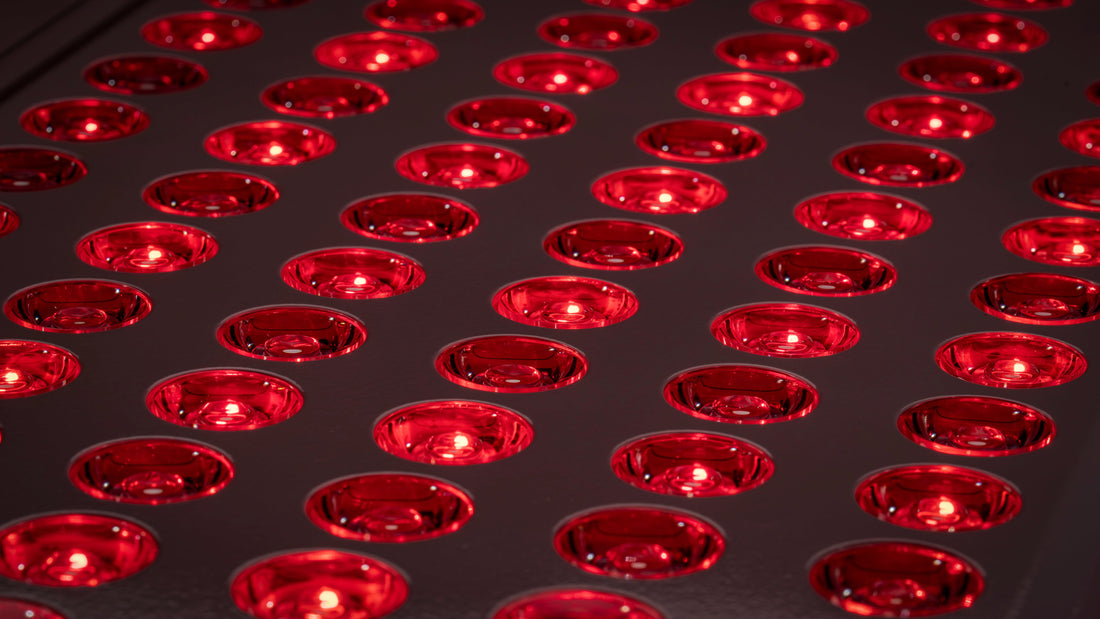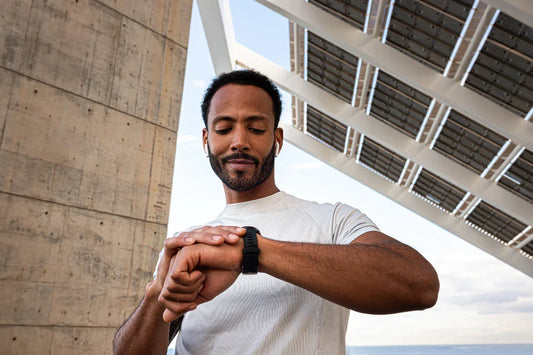
Can Red Light Therapy Boost Testosterone and Improve Sperm Health?
Share
Men today are increasingly proactive about their reproductive health, particularly in response to rising concerns over testosterone decline, sperm quality, and fertility. As conventional treatments often come with side effects or invasive procedures, interest in alternative, non-invasive therapies is growing. One such method gaining attention is Red Light Therapy (RLT). This blog explores whether RLT can positively affect testosterone production and sperm health—and what you need to know before trying it.
Key Takeaways
- RLT, through mitochondrial stimulation, may help improve testosterone production and sperm quality.
- Effective RLT typically involves targeted exposure to red or near-infrared light (600–1,000 nm) for 5–15 minutes, several times per week. However, overuse can lead to skin irritation or thermal stress, highlighting the importance of following medical and manufacturer guidelines.
- The therapy is not a miracle cure but may be more effective when paired with fertility-boosting supplements like zinc, CoQ10, or L-carnitine, and healthy lifestyle changes. It's part of a broader approach to male fertility, not a standalone fix.
- RLT may benefit men over 30, those with low sperm parameters, or individuals facing performance dips due to stress or lifestyle.
What Is Red Light Therapy?
Red Light Therapy involves exposing the body to low wavelengths of red and near-infrared light, typically between 600 nm and 1,000 nm. These wavelengths penetrate the skin and may stimulate cellular energy production by enhancing mitochondrial activity.
Originally popular for promoting skin rejuvenation and muscle recovery, RLT is now being investigated for its potential role in hormone regulation and reproductive health. Devices range from full-body panels to targeted wearable units designed for home use.
Red Light Therapy and Testosterone
Emerging research suggests that RLT may stimulate testosterone production, particularly through its interaction with Leydig cells in the testes—the cells responsible for producing testosterone. Studies in animal models have shown increased testosterone levels following near-infrared light exposure.
While human studies are more limited, some early trials and anecdotal reports indicate improved libido, energy levels, and mood. The proposed mechanism is that red light enhances mitochondrial function in Leydig cells, thereby boosting hormone output.
Safe usage typically involves exposure of the lower abdomen or testes to red or near-infrared light for 5–15 minutes, 3–5 times a week. Overuse can cause skin irritation or thermal stress, so following manufacturer and medical guidelines is crucial.
Red Light Therapy and Sperm Health
Red Light Therapy may also support sperm quality in several ways:
- Improved Sperm Count & Motility: Some animal studies suggest red light can enhance both the number and mobility of sperm.
- Better Morphology: Healthier sperm shape may result from improved cellular energy and reduced oxidative stress.
- Enhanced Circulation & Reduced Inflammation: Increased blood flow to the testes and reduced inflammation can create a more favorable environment for sperm development.
However, while promising, these outcomes are based primarily on preclinical or anecdotal data. More large-scale, peer-reviewed human studies are needed to confirm these benefits.
Complementary Products for Testosterone and Sperm Health
Red Light Therapy may offer better results when paired with scientifically supported supplements:
- Testosterone Boosters: Zinc, D-aspartic acid, and ashwagandha have shown potential to naturally increase testosterone.
- Sperm Health Supplements: Nutrients like CoQ10, L-carnitine, folate, and selenium support sperm vitality and motility.
- At-Home RLT Devices: Safe, FDA-registered panels or wearable RLT devices make treatment accessible and convenient.
Always consult a healthcare provider before combining therapies, especially if you’re taking medication or undergoing fertility treatments.
Who Might Benefit Most?
Red Light Therapy may be particularly beneficial for:
- Men Over 30: Natural testosterone levels begin to decline after age 30.
- Couples Trying to Conceive: Especially if sperm analysis reveals suboptimal sperm parameters.
- Athletes or High-Stress Professionals: Those experiencing low libido, fatigue, or performance dips may find benefit.
Myths and Misconceptions
- Myth: “RLT Is a Miracle Cure” – While RLT shows promise, it's not a replacement for medical care or a guaranteed fix.
- Risk of Overuse: Improper use can lead to burns or hormonal imbalances. Reliable real-world data highlights the importance of dosage.
- Medical Oversight Is Key: Consulting a healthcare provider ensures safe, individualized treatment plans.
Is Red Light Therapy Worth Trying?
Red Light Therapy offers exciting potential as part of a holistic male fertility and wellness strategy. It may support hormone health, improve sperm parameters, and contribute to better reproductive outcomes, but it should be used thoughtfully and in conjunction with other proven methods such as diet, lifestyle changes, and medical care.
To explore your reproductive health further, consider a confidential sperm analysis or learn about sperm preservation options from CryoChoice.
Want to better understand your sperm health? Visit CryoChoice’s sperm analysis service to get started with safe, accurate, at-home testing.
Also, explore our educational resources on:
Your path to informed fertility begins with knowledge; shine a light on your health today.
Resources:
-
PubMed - “Effect of Photobiomodulation on Male Fertility”, 2021


